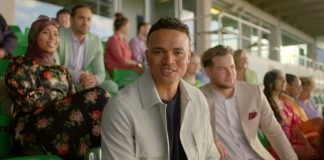With this year’s Cheltenham Festival just concluding, Star Sports explored how Newmarket’s National Horseracing Museum can satisfy the hunger for more of the sport.
The operator’s reporter Simon Nott went on-site to capture the ambience of the centuries-old palace of King Charles the Second, repurposed in 2016 to host the interactive, family-friendly museum. The fact that site visitors can meet racehorses that are brought in for retraining, coupled with the memorabilia located there makes the museum “absolutely spectacular”, according to Nott.
Management staff interviewed by the reporter include curator Alexandra ‘Sally’ Fletcher, and museum director Anne Marie-Hogan. Referring to the tall candelabrum piece placed behind them, the duo explained that it was given to Sir Admiral Henry Rouse – a former UK Navy officer from the Napoleonic Wars, who joined the Jockey Club and dedicated his life to horseracing after retiring from the Navy. His attribution to the sport is marked by developing the handicapping and weight system for horseracing.
Moving on to the National Horseracing Museum science galleries, visitors can find the skeleton of Hyperion – a horse who measured only at 15 hands high, but nevertheless managed to win the 1933 Derby Anderson Ledger under the training of George Lambton. Further examining the skeleton and unveiling the biology of a horse, Fletcher and Anne Marie-Hogan noted how ‘remarkable’ it is that the horse legs are equivalent to the structure of a human’s middle finger, pinpointing how fragile the animals are.
The Star Sports’ insight video also includes a look at the museum’s art gallery, home to a “fantastic array of paintings” that are racing-themed. The site also partners with the British Sporting Art Trust, hosting their collection as well. According to Fletcher, the art gallery gives all visitors “a walk through time” as they go through the rooms and witness paintings that tell the sport’s history over the last 300 years.
There is also a mechanical horse that visitors can get on and experience what jockeys go through during a race. The simulation is operated by Frank – a former jockey himself with a long background in horseracing.
At the end of the guided experience, visitors are taken to the museum’s barn where they are given insights on the work that goes behind the maintenance of a racing horse. This is also where people can finally see a real thoroughbred from up-close.




